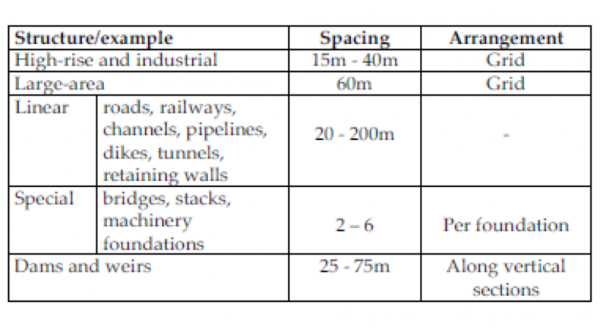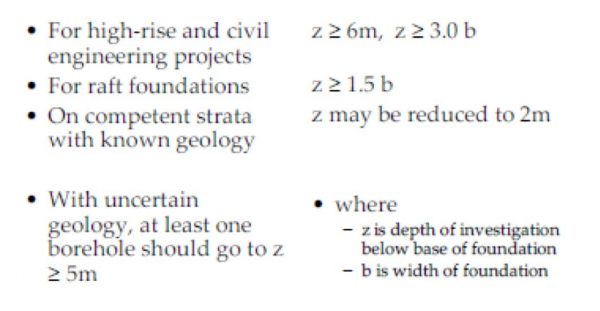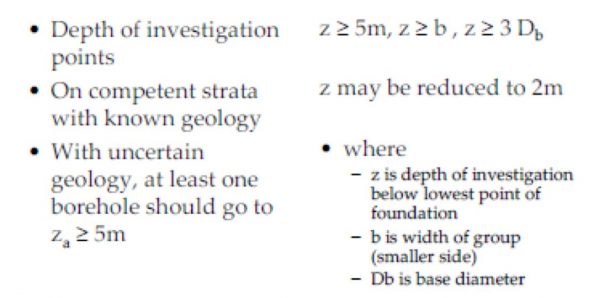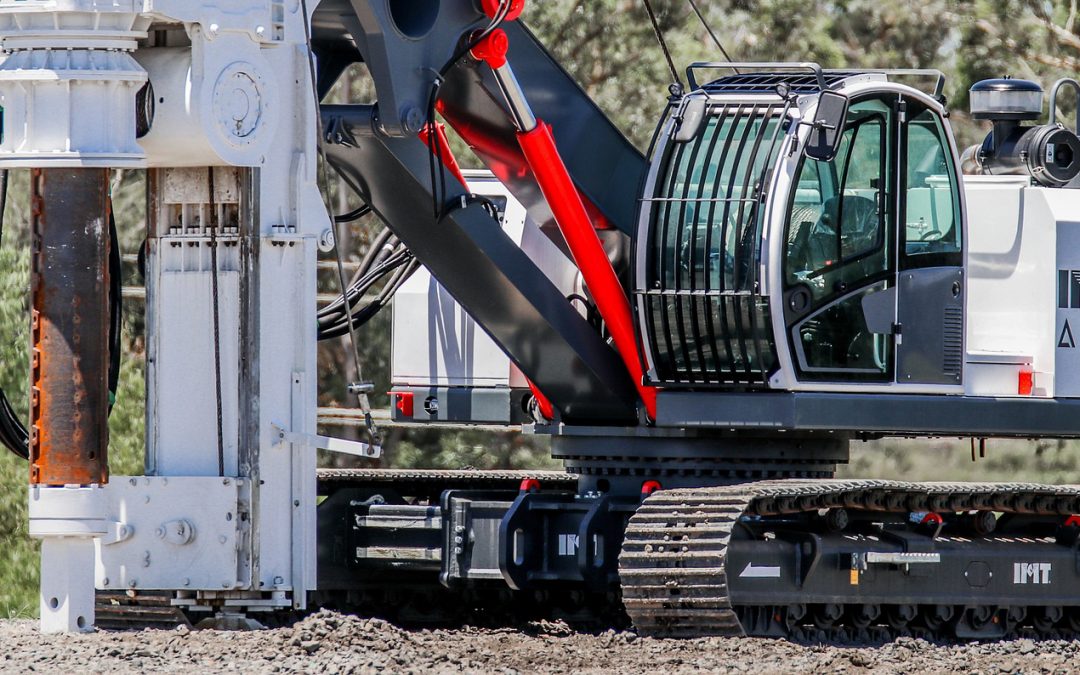The G&W Guide to… Trial Hole Scoping
Geoenvironmental • Geotechnical • Industry matters
You are developing your conceptual site model. You know the anticipated geology, the site restrictions and you know the proposed development. How do you know how many trial holes are required and what depth they should be?
Please note that “trial hole” is a generic term for any of the intrusive Site Investigation techniques – whether a trial pit or borehole – covered in our previous guides.
Thankfully the Eurocode 7 Series provides us with answers to these questions.
Spacing
The table below shows how far apart boreholes should typically be located, based on homogenous strata, which we all know never happens. Closer spacing may be required to target specific changes in geology as identified by the Conceptual Site Model or contamination risks.
 It is not surprising that the higher the Geotechnical Category of building (more complicated) the closer the spacing of borehole should be.
It is not surprising that the higher the Geotechnical Category of building (more complicated) the closer the spacing of borehole should be.
It would be interesting to review borehole spacing on a large residential site and see if the spacing is at a Eurocode 7 rate of every 60m.
What about depth?
The depth of trial holes does depend a bit on the anticipated foundation proposal. Below is an overview of the requirements should traditional footings be expected.

A general rule of thumb that could be used as guidance, is that that any trial hole should be as deep as the building is high; although this is likely to be excessive in practical terms.
Using the data in the second table, then 1.0m deep, 0.60m wide footings would need a trial hole to at least 2.8m deep. Hence most trial holes are dug to around 3m bgl. A 1.5m pad at 2.0m bgl would need at least a 6.5m borehole. For a 10m wide raft a 0.50m bgl, then you would need a 15m deep borehole!
The above is broadly based on the depth to which soils will be stressed by the foundation proposed. Care does need to be taken to ensure enough information is recovered pursuant to the proposed foundation design.
What about piles?
There is a similar theme for piled foundations, which can be seen below.
 Generally, the rule of thumb is 5m beyond the base of the deepest pile or three times the diameter of the largest pile.
Generally, the rule of thumb is 5m beyond the base of the deepest pile or three times the diameter of the largest pile.
This rule has scuppered a few developers recently, with boreholes having to be re-drilled, because the piles were designed to 18m and the original borehole was only drilled to a depth of 15m. So please be careful.
In both depth guidance graphics, there is a caveat saying that where competent strata with known geology is present, the depth of trial holes may be reduced to 2m. As always, caveats lead to grey areas in Site Investigation. But we would refer you back to The G&W Guide to… Site Investigation Theory because we are not 100% convinced there is anywhere where geology is definitely known to be competent.
The Ground & Water promise
Ground & Water will always have the above in mind when tendering for your Site Investigation. The last thing we want is for our investigation to be reject by regulators or warranty providers for not being sufficient.
We will provide a Site Investigation which provides information on the underlying ground conditions in the most cost-effective manner, balancing cost with quality of information and impact on design. We will then interpret and report on this via the timeline provided, which we believe provides you with information quickly and efficiently.
The result… A well-priced Site Investigation, which provides certainty on recommendation and value in design. Helping you get out the ground quickly and efficiently and saving you money.
